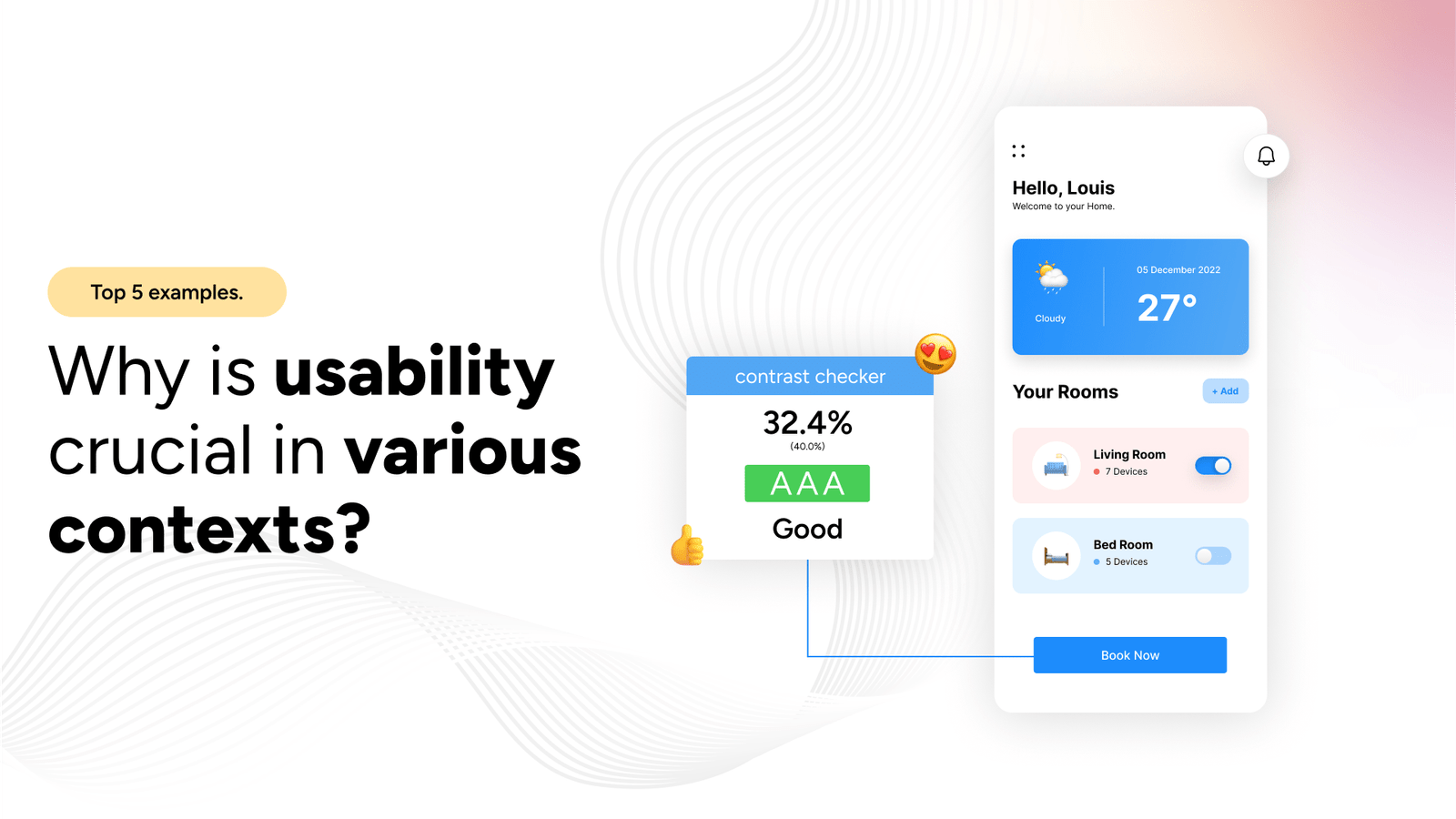What Is Usability?
Usability is a critical aspect of design and functionality across different fields and industries. It refers to the ease with which users can interact with a product or system to achieve their goals efficiently and effectively. Ensuring high usability can lead to improved user satisfaction, better performance, and higher engagement. Here are the top five examples where usability is crucial and how it makes a significant impact.
5 Examples why usability is crucial
1. Websites and E-commerce Platforms
Example: Amazon
Impact: Usability in websites and e-commerce platforms determines how easily users can navigate, find products, and complete transactions. Amazon’s user-friendly interface, intuitive navigation, and efficient search functionality ensure that customers can quickly find and purchase items, leading to higher conversion rates and customer satisfaction. Key elements include clear categorization, fast load times, and a streamlined checkout process.
Why It Matters: A well-designed e-commerce site enhances user experience, reduces bounce rates, and increases sales. Poor usability, on the other hand, can frustrate users and drive them to competitors.
2. Mobile Applications
Example: Instagram
Impact: Mobile applications with high usability offer seamless interactions, easy navigation, and quick access to features. Instagram’s clean interface, simple navigation, and intuitive design make it easy for users to post photos, interact with others, and explore content. The app’s usability contributes to its high user engagement and retention rates.
Why It Matters: Given the limited screen size and touch-based interactions on mobile devices, usability is critical to ensure users can easily access and enjoy app functionalities. Poor usability can lead to user frustration and app abandonment.
3. Healthcare Systems
Example: Electronic Health Records (EHR)
Impact: Usability in healthcare systems, such as Electronic Health Records (EHR), is essential for medical professionals to access and input patient information efficiently. A user-friendly EHR system improves the accuracy of data entry, reduces the time spent on administrative tasks, and allows healthcare providers to focus more on patient care.
Why It Matters: High usability in healthcare systems can lead to better patient outcomes, reduced errors, and increased efficiency in medical practices. Poor usability can lead to mistakes, inefficiencies, and increased stress for healthcare providers.
4. Educational Platforms
Example: Khan Academy
Impact: Educational platforms with high usability facilitate learning by providing clear, accessible content and intuitive navigation. Khan Academy’s platform is designed to be user-friendly for students of all ages, with easy-to-follow lessons, interactive exercises, and a clean layout. This usability ensures that learners can focus on their studies without being hindered by confusing interfaces.
Why It Matters: In education, usability ensures that students and educators can effectively use digital tools to enhance learning experiences. Poor usability can impede learning and reduce the effectiveness of educational programs.
5. Software Development Tools
Example: GitHub
Impact: Usability in software development tools allows developers to manage code repositories, collaborate on projects, and track issues efficiently. GitHub’s intuitive interface, comprehensive documentation, and collaborative features make it easier for developers to work together, share code, and manage projects. The platform’s usability supports efficient development workflows and community engagement.
Why It Matters: For developers, usability in tools can significantly impact productivity and code quality. Poor usability can lead to misunderstandings, errors, and decreased efficiency in the development process.
Conclusion
Usability is a critical factor in the success of products and systems across various contexts. From websites and mobile apps to healthcare systems and educational platforms, high usability enhances user satisfaction, performance, and engagement. By prioritizing usability, designers and developers can create more effective, efficient, and enjoyable experiences for users. Investing in usability is not just about making things easier to use; it’s about creating value, building trust, and fostering long-term success.








